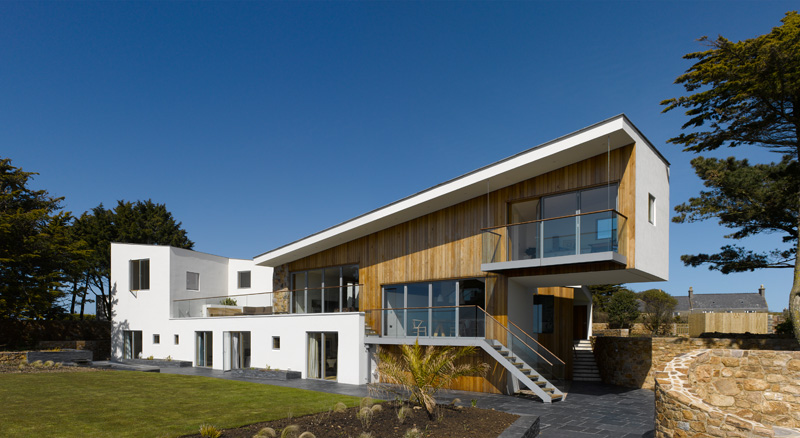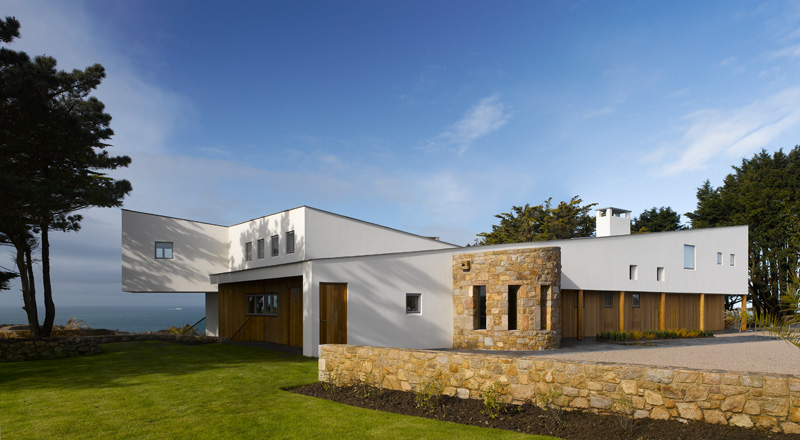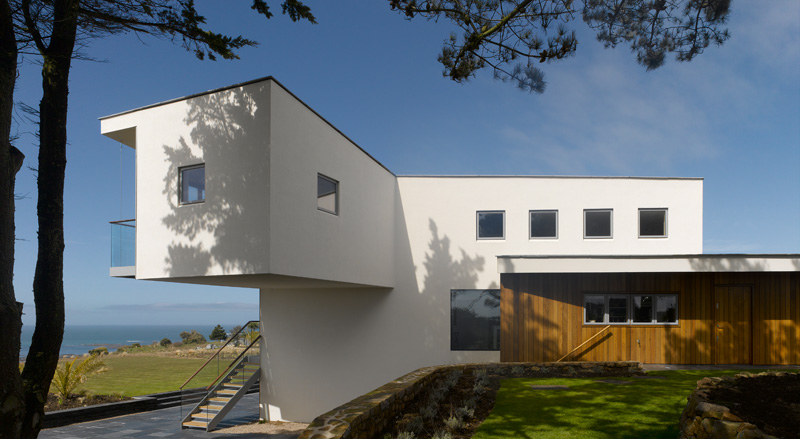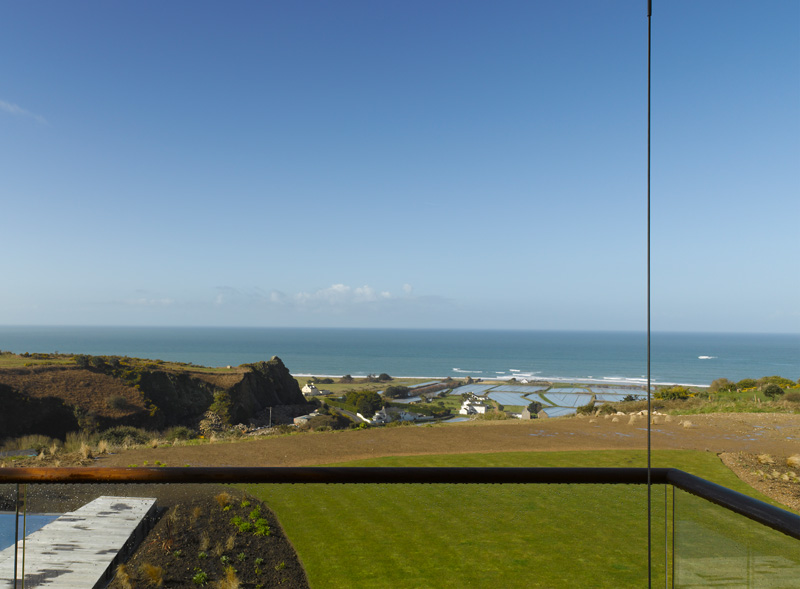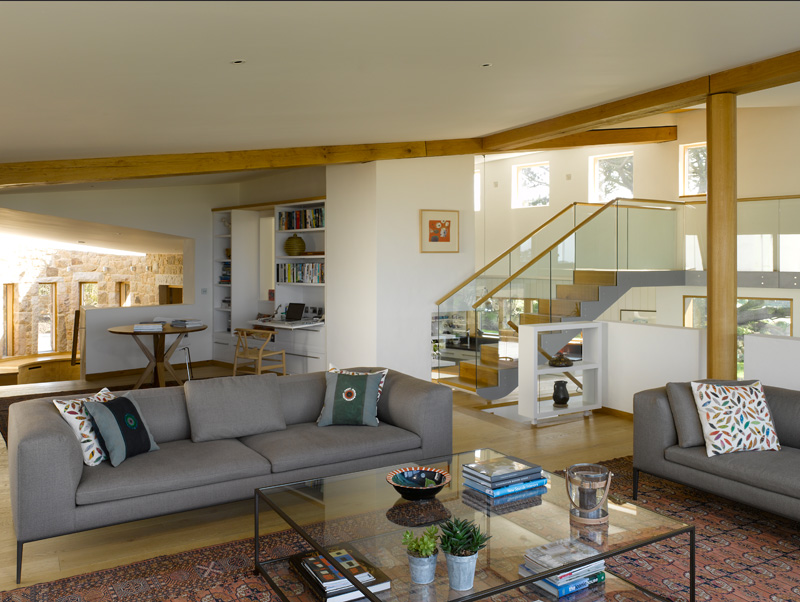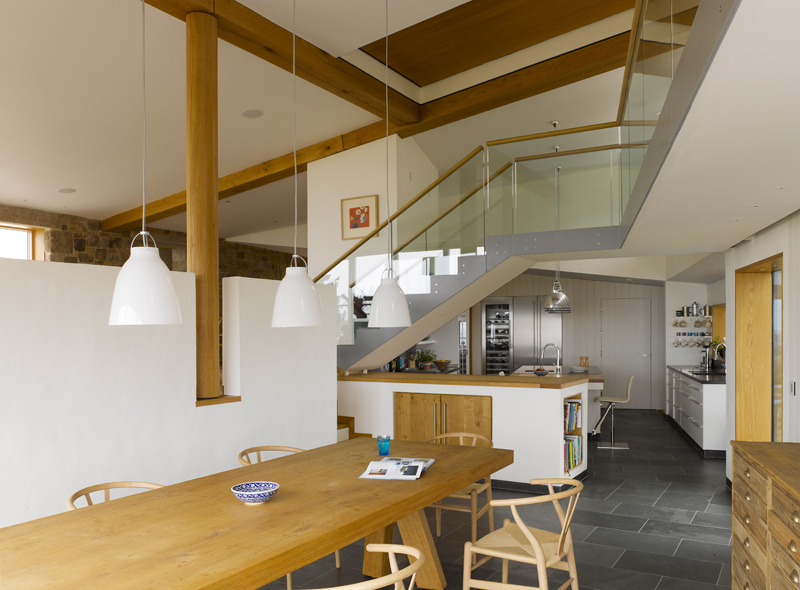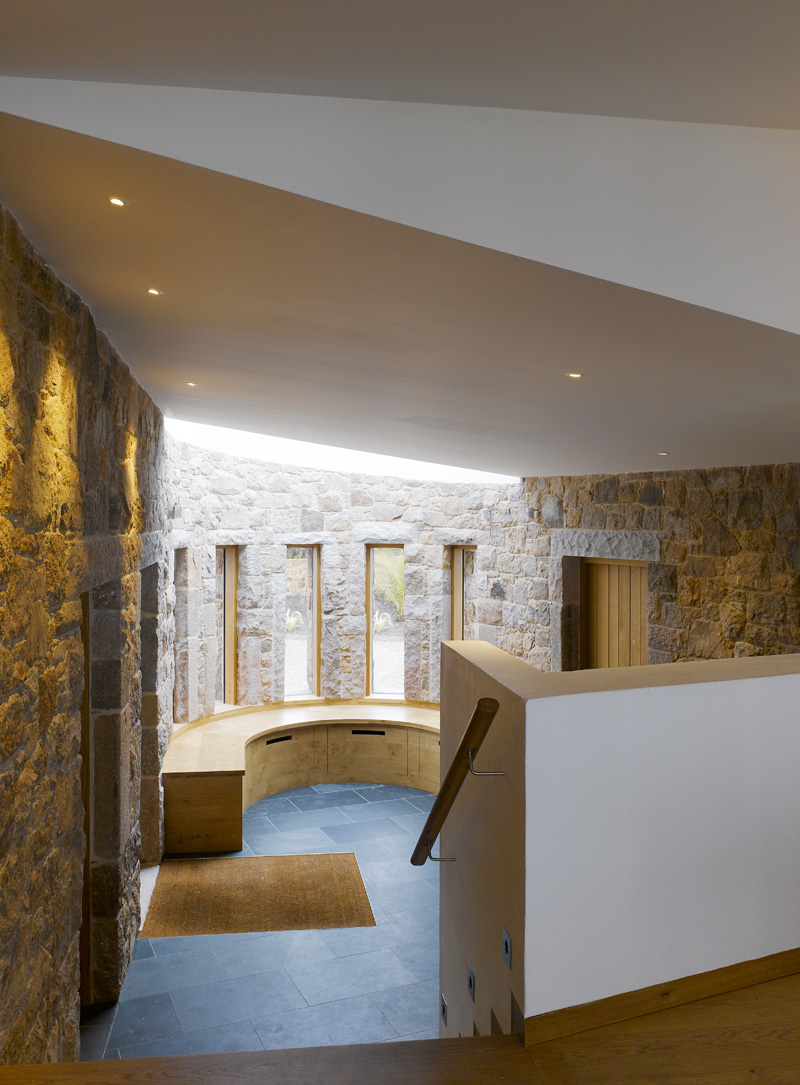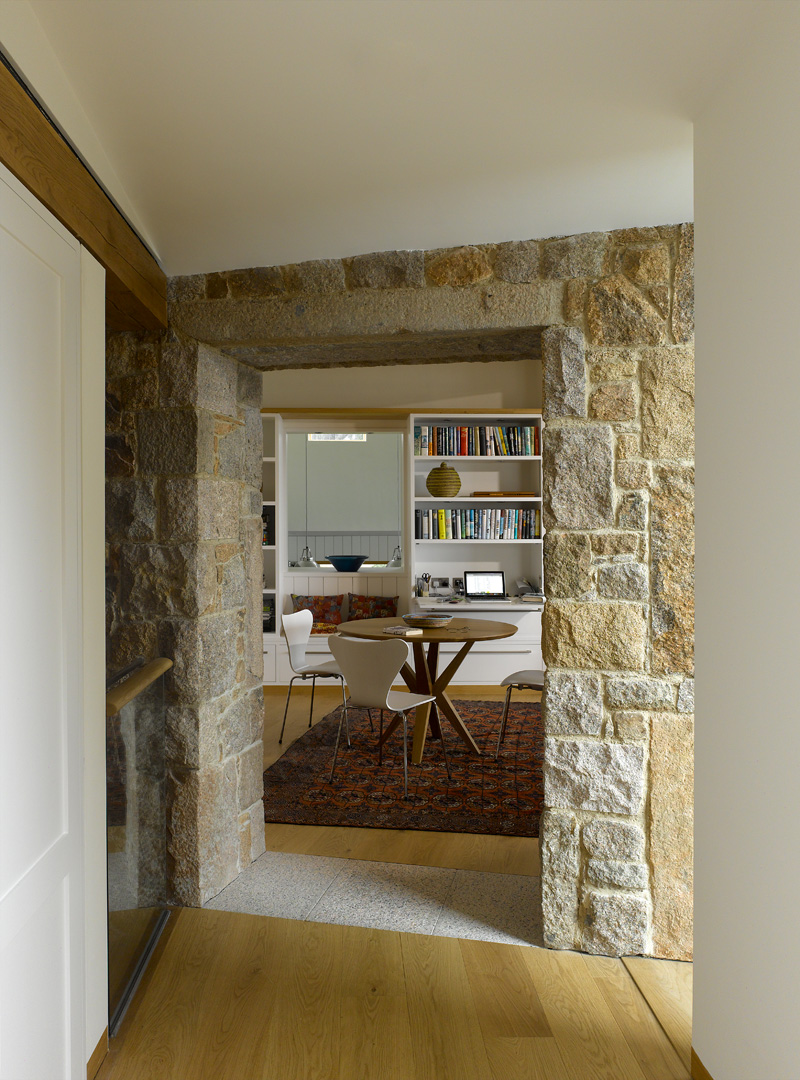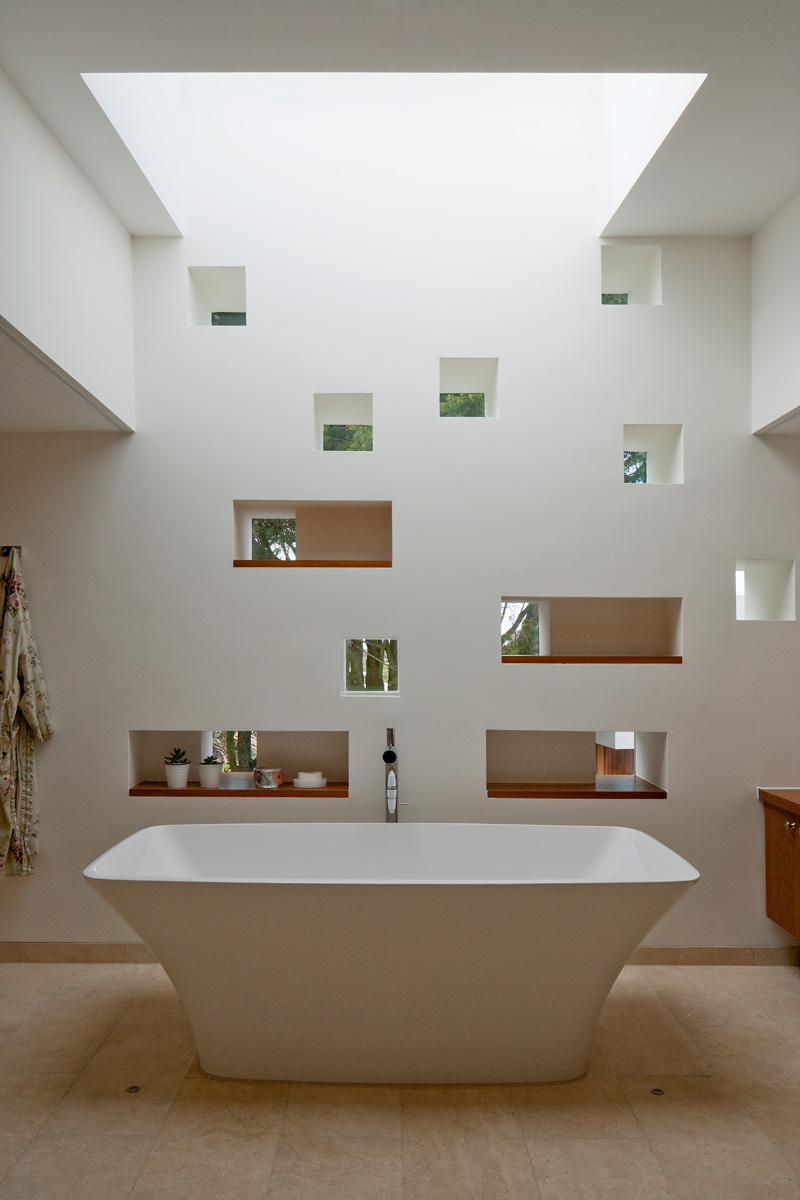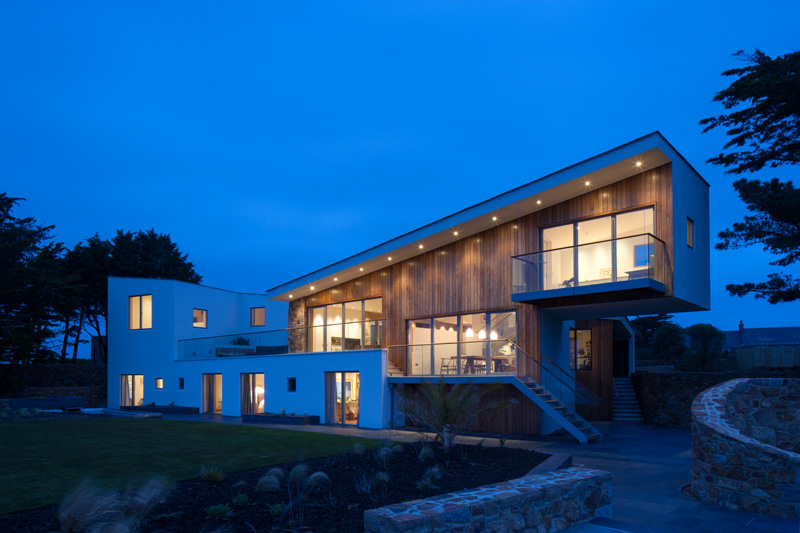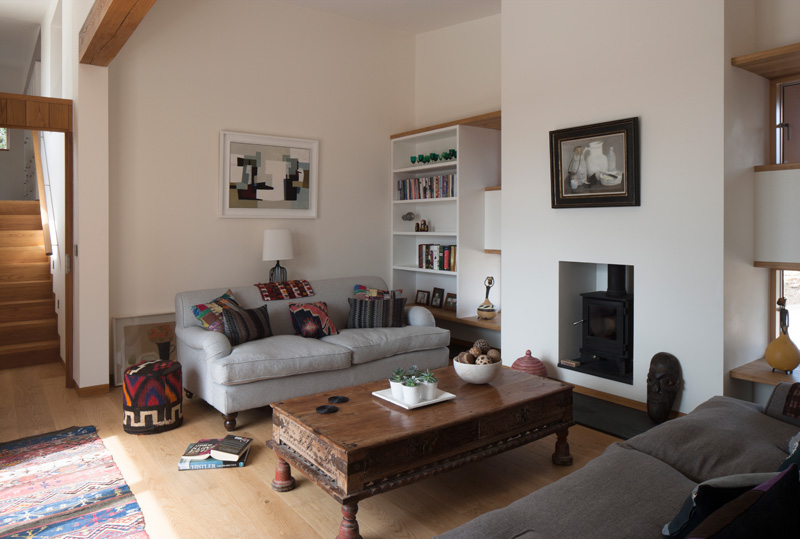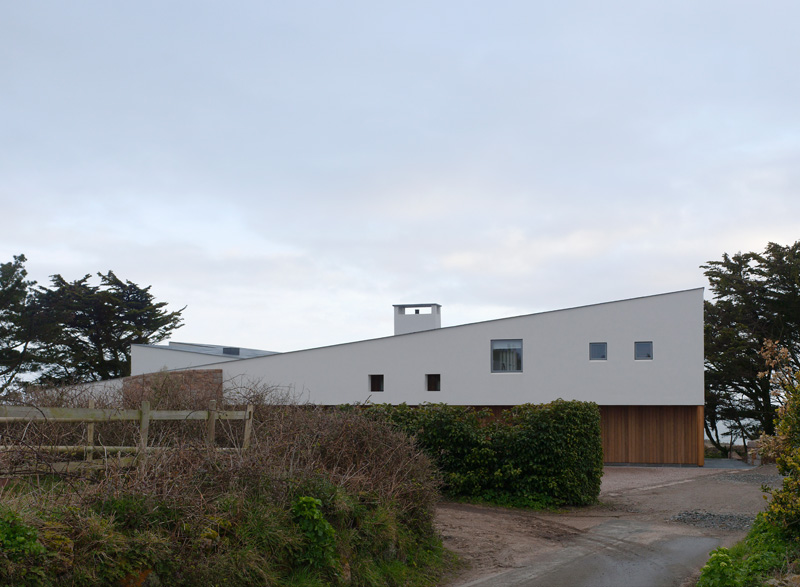Located off the coast of Normandy, France, on the island of Jersey, lies a home designed by Hudson Architects, that overlooks St Ouen’s Bay.
Here’s the architect’s description about the project
The house replaces a drab bungalow on the clifftop site – a scenic area protected by very strict planning conditions. From the outset, Hudson Architects were determined to replace the existing house with a superior contemporary scheme that would fully do justice to its setting.
The site sits on a plateau with extensive views out to sea. Despite its elevated position, there are few long distance views of the site, which is approached by a typical high bounded Jersey lane. In determining the form of the house, Hudson Architects intended that it should not dominate its surroundings but sit comfortably within them.
By excavating a lower ground level, the profile of the 470 sq.m house remains relatively discrete, and initially presents a modest profile for visitors arriving at the end of the track. The low pitch roofs of the house also form a gentle yet contemporary profile against the horizon. It is only when one moves around the site that the real drama of the building is revealed.
On arrival, the house appears as a single tall storey tapering towards the west with the slope of the roof. The entrance elevation contains a colonnade providing shelter and a walkway to the front door, and is punctuated by a distinctive semicircular stone hallway that bulges from the house. This is reminiscent of the Martello towers found around the Jersey coast – fortifications built during the Napoleonic Wars to protect the island from invasion – and draws the eye to the front door, giving a sense of arrival and protection.
Moving around the building, the garden front facing the sea is a more relaxed architectural composition, with timber cladding providing a softer presence where it cuts into the white rendered elevation. The main body of the house and a visually lighter pavilion enclosing the main living areas frames a semi-enclosed south-facing courtyard.
The courtyard connects the inside and outside spaces while, rising above it at the eastern end of the house, a “crows nest” cantilevers outwards. This, and the double-height living spaces under the roof, enjoys fantastic views from large picture windows and a series of balconies and terraces. The different treatments of each elevation are united by two low-pitched roofs that slope gently towards each other in the centre of the house, creating a playful range of angles and offering a varied series of silhouettes against the skyline.
The internal spaces accommodate contemporary family life with a mixture of open and more intimate spaces. The sequence of different levels and mixture of volumes provides a lively and interesting internal composition. The main living space juxtaposes traditional and modern materials: exposed granite walls, oak ceiling beams and tall oak columns contrast with a more contemporary palette of steel and glass used for the crow’s nest staircase.
A series of smaller spaces that are full of character: cool and relaxing bedrooms, the stone hallway with its tall, narrow windows suggesting strength and seclusion; and the spectacular main bathroom with its irregular series of small windows set into a tall wall beneath a stepped ceiling.
Architecture: Hudson Architects
Photography by James Brittain Photography
